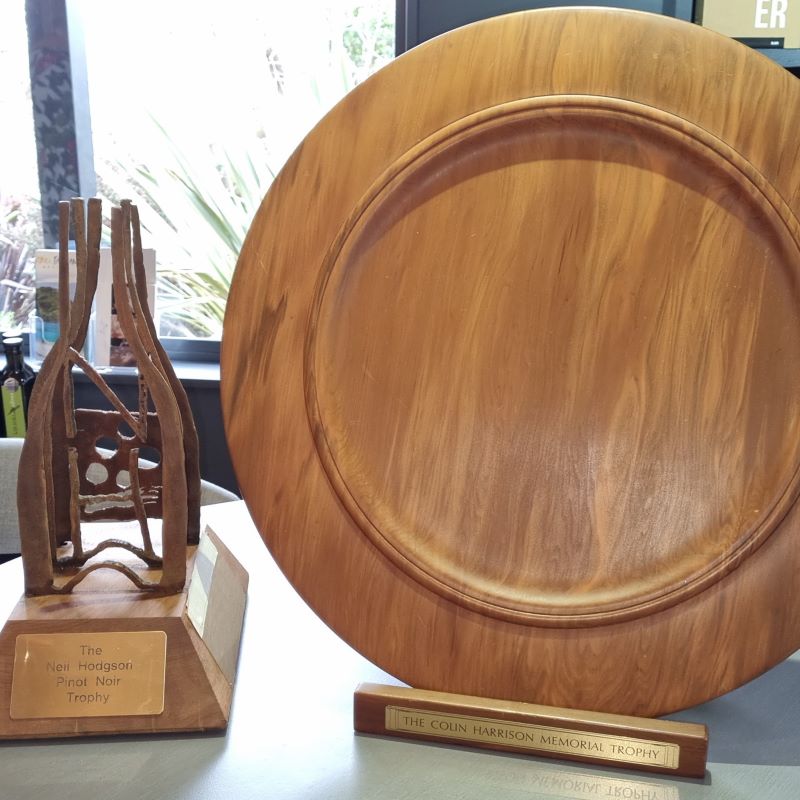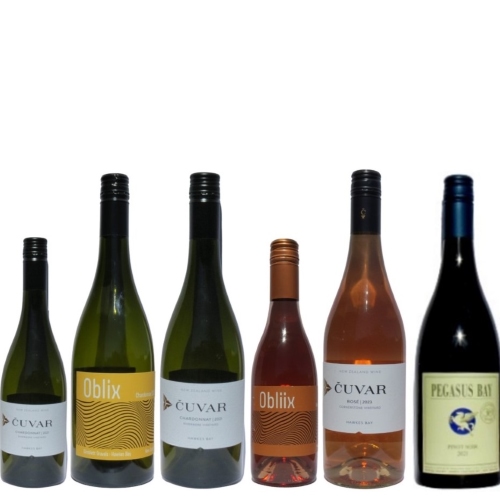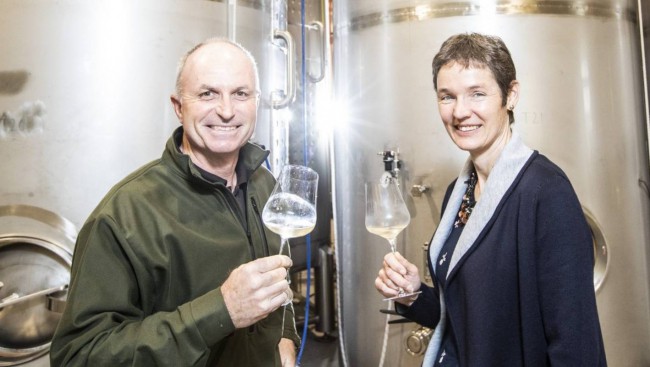
Blackenbrook Vineyard
I have been a fan of Blackenbrook Vineyard’s wines for many years, in fact I have been following the evolution of this family business since their first wines hit the market in 2004.
Daniel and Ursula Schwarzenbach moved to Nelson in 1998 and they both initially worked at Seifried Estate. They always intended to buy some land and establish their own vineyard and wine label so, while Daniel (winemaker) and Ursula (in the vineyards) were both working at Seifried Estate they spent their spare time searching for the perfect site to plant their own vines.
In 1999 the couple bought a piece of rolling hillside land at Tasman overlooking the estuary and planted their first vines in 2001, had children in 2003 and 2007 and launched their first wines in 2004, it was a very busy time!
Working long days at one job and then coming home to work even longer hours in their own vineyard showed how this couple are prepared to work incredibly hard with a determined focus to produce the very best wines they can.
As I said at the start of this article I have kept an eye on the evolution of Blackenbrook and have seen many changes over the years, some have been experimental, some have been subtle and many of the changes have been designed to extract the very best from each variety in the vineyard.
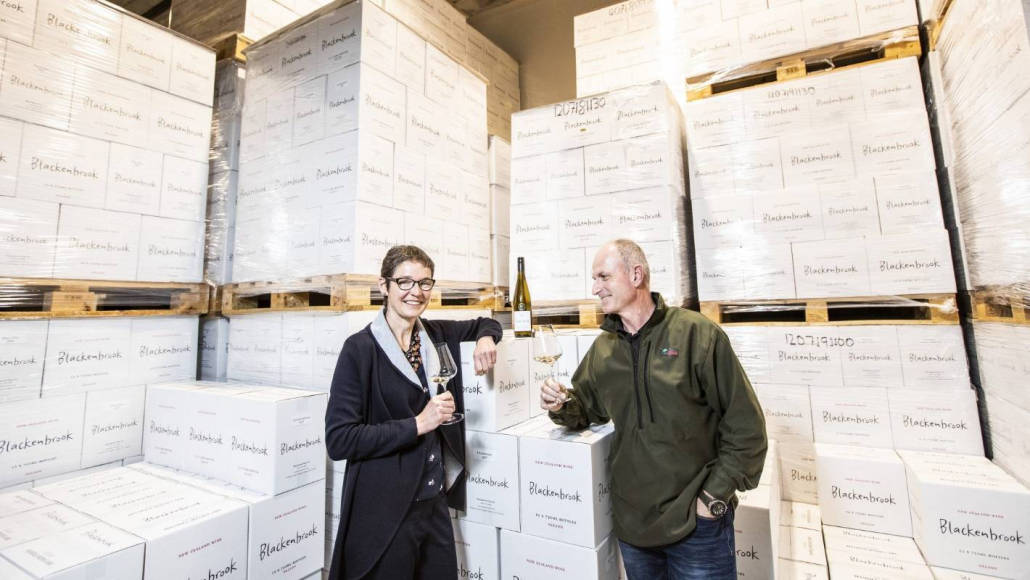
Daniel and Ursula have always been mindful of their environmental footprint and designed a winery that has as little impact as possible on the natural environment, including all wastewater from the winery being collected and used for irrigation. It was also designed to be as gentle as possible when it comes to handling and processing the beautiful grapes they grow, they want the wonderful varietal flavours of each wine to shine in their wines.
The couple recently introduced solar energy into the winery, now use an electric forklift and customers can also give them the packaging back for reuse. All of this is to further reduce their environmental footprint.
The experimental part of the evolution of Blackenbrook has been with varieties they produce, Riesling has come and gone (to my disappointment) and Muscat has also come and gone from the vineyard.
Daniel told me “basically they were the wrong varieties for the site and as we learned about our land we knew other varieties would do better, Riesling struggled to ripen enough before autumn rains arrived each year and Muscat was always an experiment. From eight or nine vintages of Muscat we only had three crops worth making wine with. As much as we love the variety and the wine we made it just doesn’t make sense to make wine one year in three.”
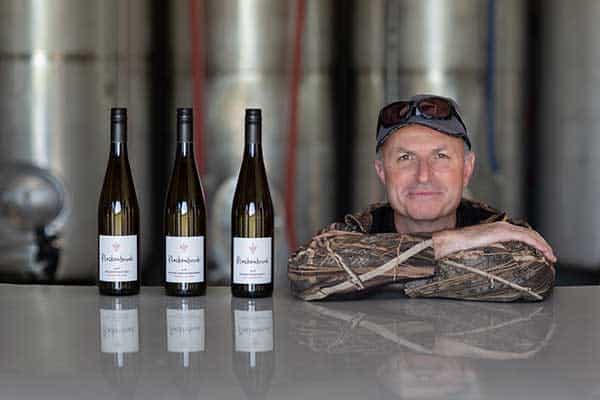
The Riesling was replaced with more Chardonnay and they were looking for another aromatic variety to replace the Muscat. Ursula said “Daniel came back from judging a wine competition in Switzerland, the Mondial des Pinots where various types of Pinot are judged (Pinot Noir, Pinot Gris and Pinot Blanc all have the same genetic links) and he was really taken by many of Pinot Blanc wines he tasted, he thought it would do very well on our site.”
Pinot Blanc can be quite a bland variety but Daniel says it really does depend on how you grow the grapes, “it takes the right site, intensive work in the vineyards and low cropping levels but it is also a very versatile variety, you can go in the direction of a Chardonnay by aging the wine in oak barrels, towards a fruity Pinot Gris style or even towards a spicy Gewurztraminer style depending totally on how the grapes are grown. It is one variety that is wonderful when produced on the right site.”
Blackenbrook have planted three clones of Pinot Blanc and Daniel says “there’s very little difference in the vineyard while the vines are young but we do expect to see some small differences as time goes by, the key difference is likely to be seasonal where one clone does better than others depending on the weather during the growing season.”
I asked Daniel what he really likes about the variety, “that’s a difficult question, the ones I tasted in Switzerland were really fruity, an explosion of fruit flavours, but with a nice flinty backbone, in many ways they were similar to a fruity Pinot Gris but with more acid structure.”
There is a total of approximately 11ha of Pinot Blanc planted in New Zealand, including some at Greenhough Vineyards “but a lot is blended away as a structural component in another wine, some is aged in old oak like Greenhough do with theirs.
“I thought it could do really well in our clay soils and the first vintage is looking very promising for the future of Pinot Blanc in our vineyard.
“Because we had a vine nursery here when we established the vineyard we had trialled various rootstocks, the 3309 root stock is particularly suited to our soils and climate, it is a deep rooting rootstock so handles dry weather very well, the Pinot Blanc vines we planted are all on the 3309 rootstock.”
Ursula told me the first harvest of their Pinot Blanc went better than they had hoped for, “we had perfect ripeness before the rain came and because we put so much effort into making sure the vineyard was in peak condition to handle any adverse weather the fruit was harvested in great condition.”
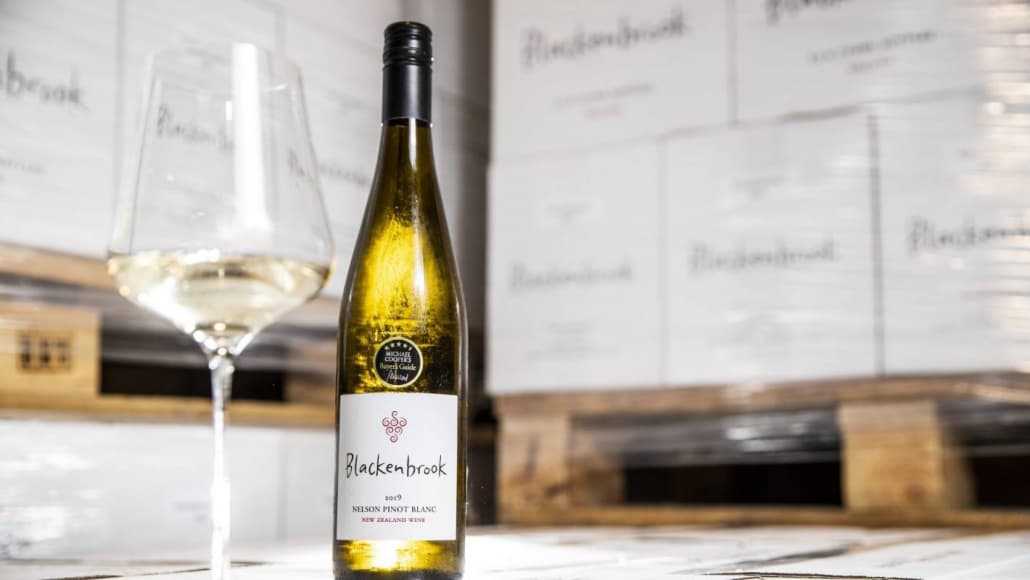 So what does this very first Blackenbrook Pinot Blanc taste like?
So what does this very first Blackenbrook Pinot Blanc taste like?
The pale lemon-gold colour sparkles in the glass and because the wine is made with very low levels of sulphur and relies on natural CO2 from the fermentation process as a preservative it has a delightful spritz on your tongue when you first taste it. The 6-8gms of residual fruit sugars delivers a lovely rounded texture without being heavy and the beautifully ripe, low pH acidity balances the wine nicely.
This is an outstanding new wine for Blackenbrook, a wine packed with flavour, a wine that is textural in the mouth, a wine that has juicy acidity in the finish and a wine that is beautifully clean. The hallmark varietal purity we have all come to expect from Blackenbrook wines shines brightly and it is anything but a bland Pinot Blanc, it is a wine with personality made in a style everyone will enjoy. Blackenbrook 2019 Pinot Blanc RRP $26-28

